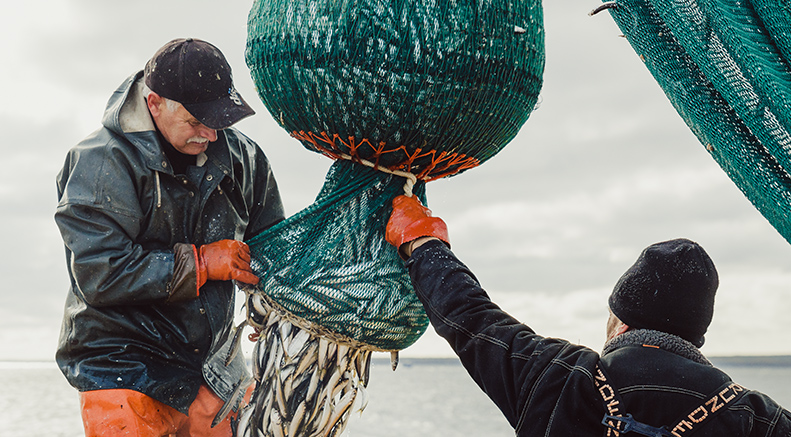Sweden’s Bothnian Bay vendace fishery, which produces the renowned Kalix löjrom (Caviar of Kalix), was MSC certified in June 2015. Fishing take place only five weeks a year, so I took the opportunity to visit the fishery in action during September. This was my first visit to a certified fishery, and I was amazed by the fishermen’s focus on sustainability.
The “red gold” Kalix löjrom is famous throughout Sweden and the Baltic region. Due to the uniqueness of its colour and flavour, the region’s special roe holds the status of Protected Designation of Origin (PDO), much like Champagne or Parma ham.
Kalix is a remote rural location, situated at the top of the Gulf of Bothnia, near the Swedish-Finnish border. I grew up 200 km away, which is practically next door in the sparsely populated north of Sweden, but this was a completely new environment for me.
Fishing operations are highly restricted here, with fishermen trawling in pairs and only between 6am and 4pm, Sunday to Thursday, during the five-week season. Only 35 fishing licenses are handed out each year. Such strict rules for a fishery are quite unusual in Sweden, but they have made it possible for the vendace fishery to work sustainably.
Preparing a delicacy
Upon arrival, I was treated to a delicious lunch with three kinds of tunnbröd (crispy flatbread), smoked and seared vendace and plenty of fresh Kalix löjrom. Then we set off to sea. Over the course of the day, the fishermen I accompanied, Kjell Strömbäck and Gunnar Nilsson, landed 6 tons of vendace. Boats are only allowed to be up to 14 metres long, so space onboard was very limited.
I estimated this 6 tons consisted of at least 240, 000 small fish – all of which were to be sorted by hand. This seemed more than enough for 25 people to handle in one evening, but the job is completed through well-organised teamwork.
One team identifies and separate females from males, while another gently removes the roe from the females. Each female contains between 3 and 8 grams’ worth of caviar. A lot of the workers here are teenagers. “Vendace has financed a lot of mopeds in this area” I’m told with a smile.
The most sensitive stage in the preparation process is the cleaning, drying and salting of the caviar. Only the fisherman and his wife are trusted enough to take on this task. Nothing is added except salt and to last a whole year, Kalix löjrom is usually kept frozen, so eating it fresh here was really something special.
A bright future for the vendace fishers
The traditions of this special fishery have sustained it for generations and its importance to the local economy cannot be underestimated. As much as 80 % of a fisherman’s yearly income can come from these five weeks of vendace fishing. Now, with MSC certification they are able to demonstrate to consumers that their operations are well-managed. This will help sustain their income and reputation and perhaps reach new markets. The next step is to get people to realise that vendace in itself is good to eat. Following this trip I will certainly buy vendace, when I find it, while my respect for the delicacy that is Kalixlöjrom, has only grown.

